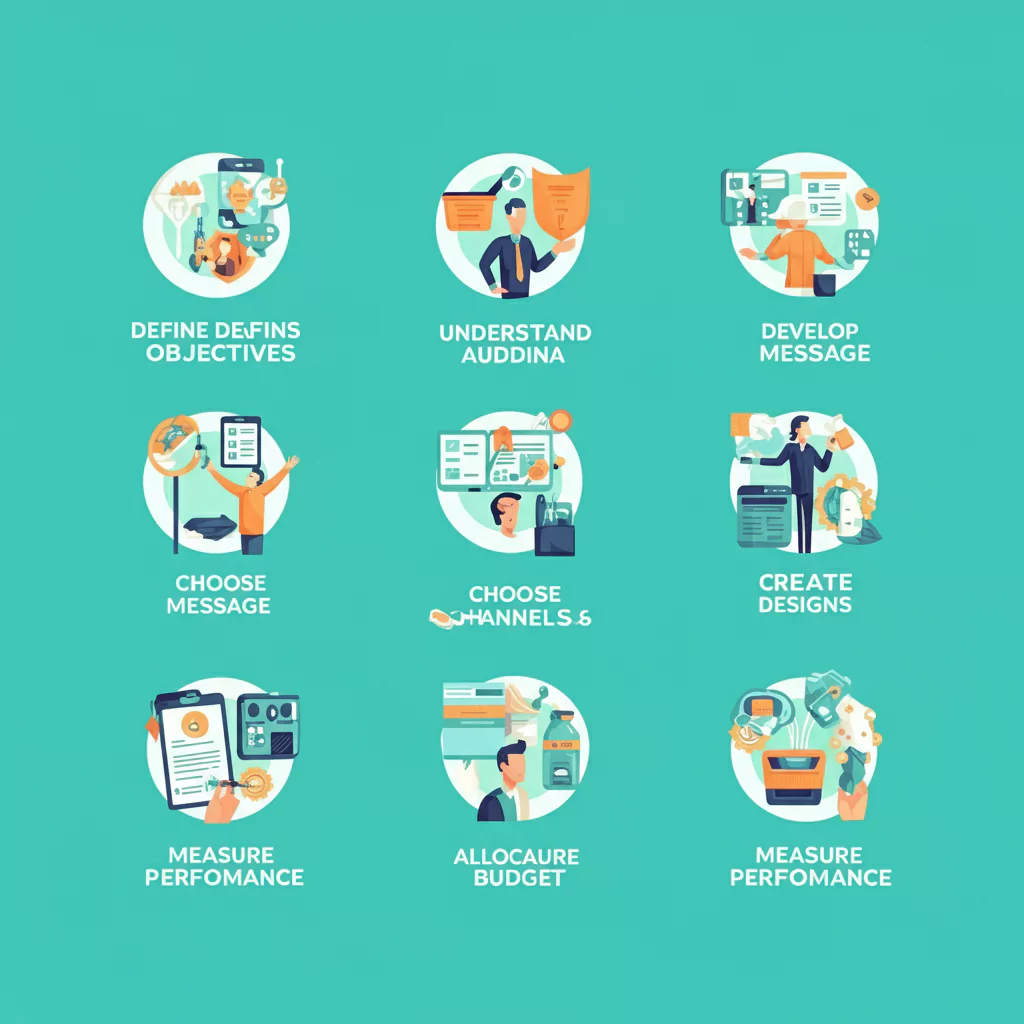Even in a digital-first world, traditional marketing continues to hold its ground as a powerful tool for reaching and engaging audiences. From well-crafted television ads to eye-catching billboards, traditional marketing campaigns offer a proven way to connect with customers in tangible, memorable ways. But how do you ensure your campaign achieves its goals and stands out in a sea of advertisements?
This blog will guide you through the key steps to create a successful traditional marketing campaign. Whether you’re a small business owner or a seasoned marketer, you’ll learn actionable tips to make the most of your offline marketing efforts.
What is Traditional Marketing?
Traditional marketing refers to any promotional activity that doesn’t take place online. This includes channels such as television, radio, print (magazines and newspapers), outdoor advertising (billboards, posters), direct mail, and even events like trade shows.
Unlike digital marketing, where campaigns can be adjusted and tracked in real-time, traditional marketing often requires significant planning and upfront costs. However, its benefits, such as broad audience reach, emotional resonance, and tangible impact, make it a crucial component of any comprehensive marketing strategy.
Why Traditional Marketing Still Works
Traditional marketing might seem outdated compared to digital strategies, but it remains effective for several reasons:
- Wider Audience Reach: TV and radio ads, for instance, often reach demographics not actively engaged online.
- Tangible Impact: Physical ads like brochures or billboards can leave a lasting impression, as they exist in real-world spaces.
- Credibility: Established media, like print newspapers, lends credibility to your brand.
- Multi-sensory Appeal: Radio ads stimulate the auditory senses, while billboards and print cater to the visual, enhancing engagement.
The key is knowing how to craft a campaign that leverages these unique strengths effectively.
Steps to Create a Successful Traditional Marketing Campaign

1. Define Clear Objectives
Start with the end in mind. Are you looking to increase brand awareness, generate leads, or boost sales? Knowing your campaign’s goal is essential for crafting your message and measuring success.
For example:
- Objective: Increase foot traffic to your new retail store.
- Metric: 20% more visitors during the opening week.
Pro tip: Use the SMART goal-setting framework (Specific, Measurable, Achievable, Relevant, Time-bound) to create clear and achievable objectives.
2. Understand Your Target Audience
Your campaign will only succeed if it resonates with the right audience. Research your target demographic to understand their habits, preferences, and media consumption patterns.
Key questions to address:
- What is their age group?
- Do they listen to the radio, read newspapers, or commute past billboards?
- What problems do they face that your product or service solves?
For instance, if your audience is commuters, an outdoor billboard on high-traffic routes can be a great option. On the other hand, if you’re targeting seniors, consider print ads in magazines they frequently read.
3. Develop a Compelling Message
Your campaign message should effectively communicate your value proposition while capturing the audience’s attention. Focus on creating a message that’s:
- Clear: Avoid jargon and get straight to the point.
- Emotionally Resonant: Appeal to the audience’s emotions, whether it’s nostalgia, excitement, or aspiration.
- Consistent: Ensure the message aligns with your overall brand voice and identity.
Example:
A billboard for a coffee shop might simply say, “Fuel Your Morning Here ☕. Exit 24B.”
4. Choose the Right Channels
The effectiveness of a traditional marketing campaign often depends on selecting the right channels. Consider your audience and objectives when making this choice:
- Television: Ideal for high-budget campaigns targeting a mass audience.
- Radio: Great for reaching commuters and creating a memorable auditory experience.
- Print: Effective for hyper-local targeting or niche markets.
- Outdoor (Billboards, Transit Ads): Perfect for high-traffic, urban areas.
- Direct Mail: Best for personalizing offers and creating a tangible connection.
For example, a local restaurant launching a summer promotion might use a mix of radio ads and outdoor billboards to drive traffic.
5. Create Eye-Catching Designs
The visual and auditory appeal of your campaign is critical. A poorly designed ad won’t grab attention, much less convey your message. Here are some tips:
- Use bold, high-contrast colors in visuals to grab attention.
- Limit text to make the message easily digestible at first glance (especially for billboards).
- Incorporate striking images or graphics to reinforce your message.
6. Allocate a Realistic Budget
Traditional marketing campaigns often require significant upfront investment. Whether you’re securing a prime-time TV slot or renting a billboard, costs can add up.
Break down your budget:
- Advertising placement costs (e.g., TV stations, billboard rental fees).
- Creative development (hiring designers, writers, or agencies).
- Printing or production costs (e.g., flyers, brochures).
Pro tip(s):
Track your spending carefully to ensure you’re staying on target. Use spreadsheets or budget-management software to avoid overspending.
7. Measure Performance and Optimize
Although traditional marketing doesn’t offer the same level of analytics as digital campaigns, it’s still essential to measure its effectiveness.
How?
- Use promotional codes tied to the campaign to track conversions.
- Survey customers about how they found your product or service.
- Analyze foot traffic increases or sales spikes during the campaign duration.
Example:
If your billboard campaign is driving more foot traffic but not conversions, you may need to adjust the messaging or offer.
Tips for Maximizing the Impact of Your Campaign
- Combine traditional and digital strategies. For example, include a QR code on a print flyer to drive customers to your website or app.
- Partner with local influencers or community leaders to amplify your message.
- Keep refining your campaigns based on feedback and results.
Drive Better Results with Thoughtful Traditional Marketing
A well-executed traditional marketing campaign can still make a remarkable impact, even in our digital-heavy age. By defining clear objectives, understanding your audience, and carefully planning every element of your campaign, you’ll set yourself up for success.
Remember, it’s not about pitting traditional marketing against digital marketing but rather finding the synergy between the two. Curious about combining these strategies? Check out our resources on integrated marketing for more tips and insights.









